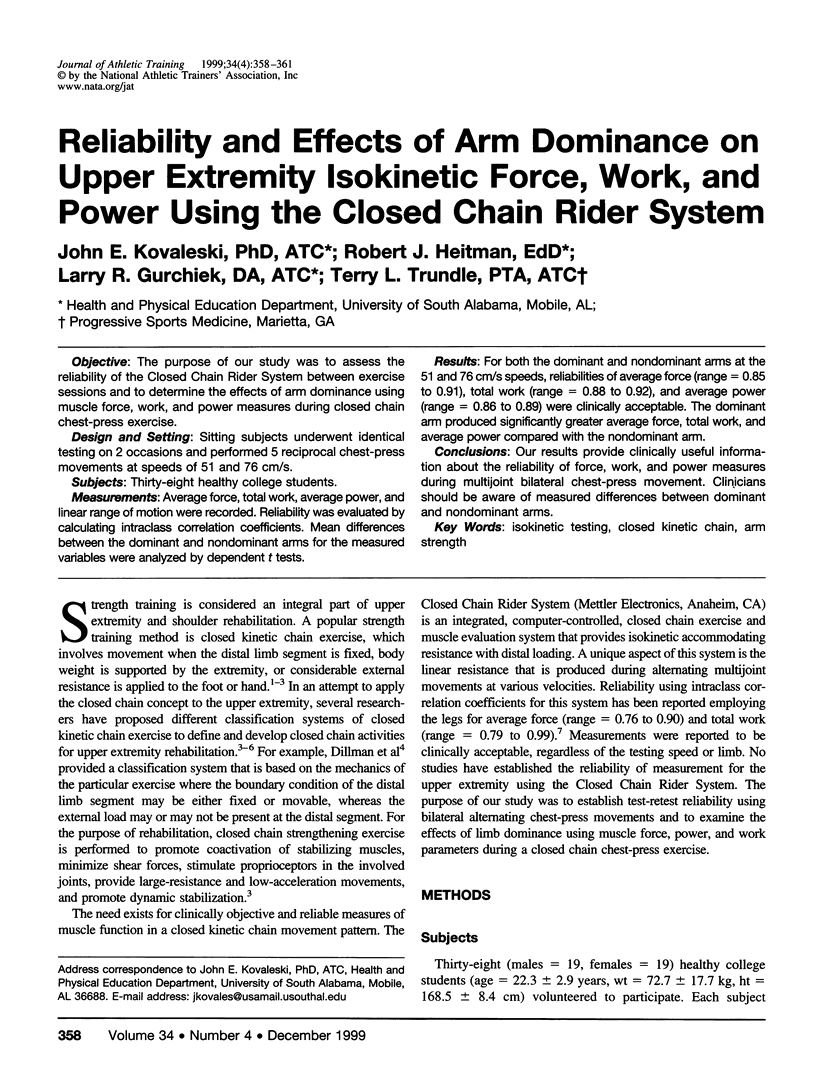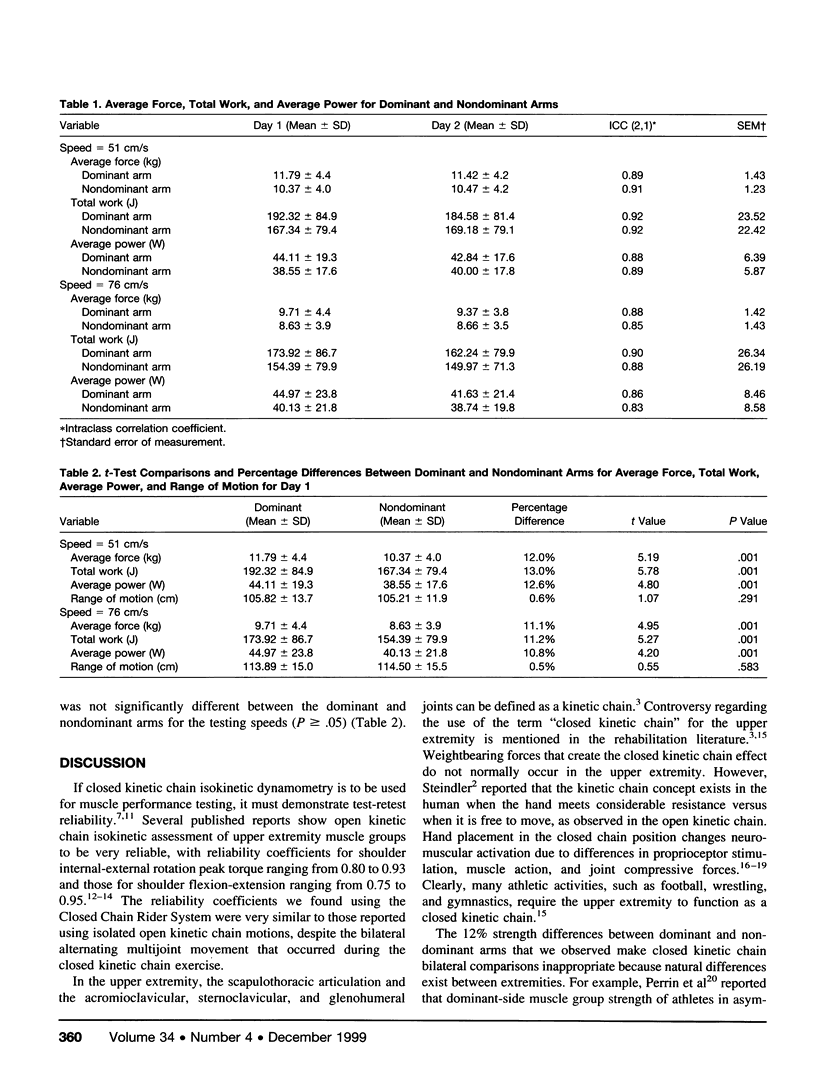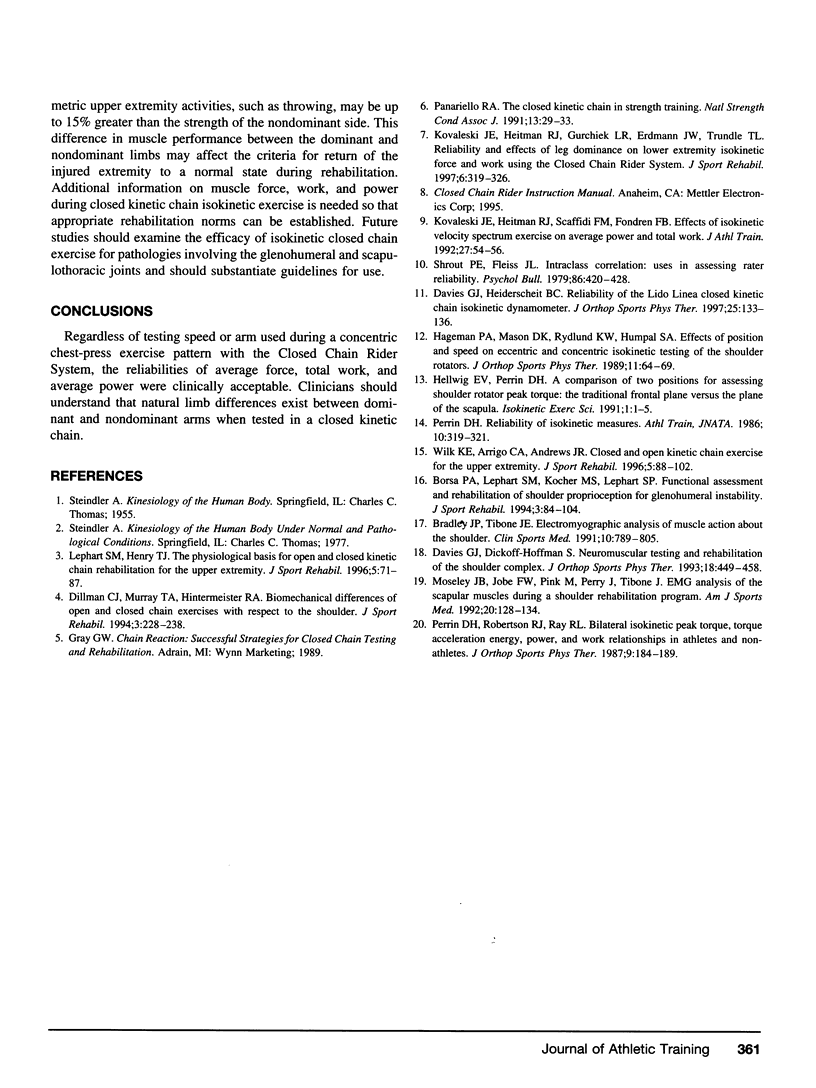Abstract
Objective:
The purpose of our study was to assess the reliability of the Closed Chain Rider System between exercise sessions and to determine the effects of arm dominance using muscle force, work, and power measures during closed chain chest-press exercise.
Design and Setting:
Sitting subjects underwent identical testing on 2 occasions and performed 5 reciprocal chest-press movements at speeds of 51 and 76 cm/s.
Subjects:
Thirty-eight healthy college students.
Measurements:
Average force, total work, average power, and linear range of motion were recorded. Reliability was evaluated by calculating intraclass correlation coefficients. Mean differences between the dominant and nondominant arms for the measured variables were analyzed by dependent t tests.
Results:
For both the dominant and nondominant arms at the 51 and 76 cm/s speeds, reliabilities of average force (range = 0.85 to 0.91), total work (range = 0.88 to 0.92), and average power (range = 0.86 to 0.89) were clinically acceptable. The dominant arm produced significantly greater average force, total work, and average power compared with the nondominant arm.
Conclusions:
Our results provide clinically useful information about the reliability of force, work, and power measures during multijoint bilateral chest-press movement. Clinicians should be aware of measured differences between dominant and nondominant arms.
Keywords: isokinetic testing, closed kinetic chain, arm strength
Full text
PDF



Images in this article
Selected References
These references are in PubMed. This may not be the complete list of references from this article.
- Bradley J. P., Tibone J. E. Electromyographic analysis of muscle action about the shoulder. Clin Sports Med. 1991 Oct;10(4):789–805. [PubMed] [Google Scholar]
- Davies G. J., Dickoff-Hoffman S. Neuromuscular testing and rehabilitation of the shoulder complex. J Orthop Sports Phys Ther. 1993 Aug;18(2):449–458. doi: 10.2519/jospt.1993.18.2.449. [DOI] [PubMed] [Google Scholar]
- Davies G. J., Heiderscheit B. C. Reliability of the Lido Linea closed kinetic chain isokinetic dynamometer. J Orthop Sports Phys Ther. 1997 Feb;25(2):133–136. doi: 10.2519/jospt.1997.25.2.133. [DOI] [PubMed] [Google Scholar]
- Kovaleski J. E., Heitman R. J., Scaffidi F. M., Fondren F. B. Effects of isokinetic velocity spectrum exercise on average power and total work. J Athl Train. 1992;27(1):54–56. [PMC free article] [PubMed] [Google Scholar]
- Moseley J. B., Jr, Jobe F. W., Pink M., Perry J., Tibone J. EMG analysis of the scapular muscles during a shoulder rehabilitation program. Am J Sports Med. 1992 Mar-Apr;20(2):128–134. doi: 10.1177/036354659202000206. [DOI] [PubMed] [Google Scholar]



